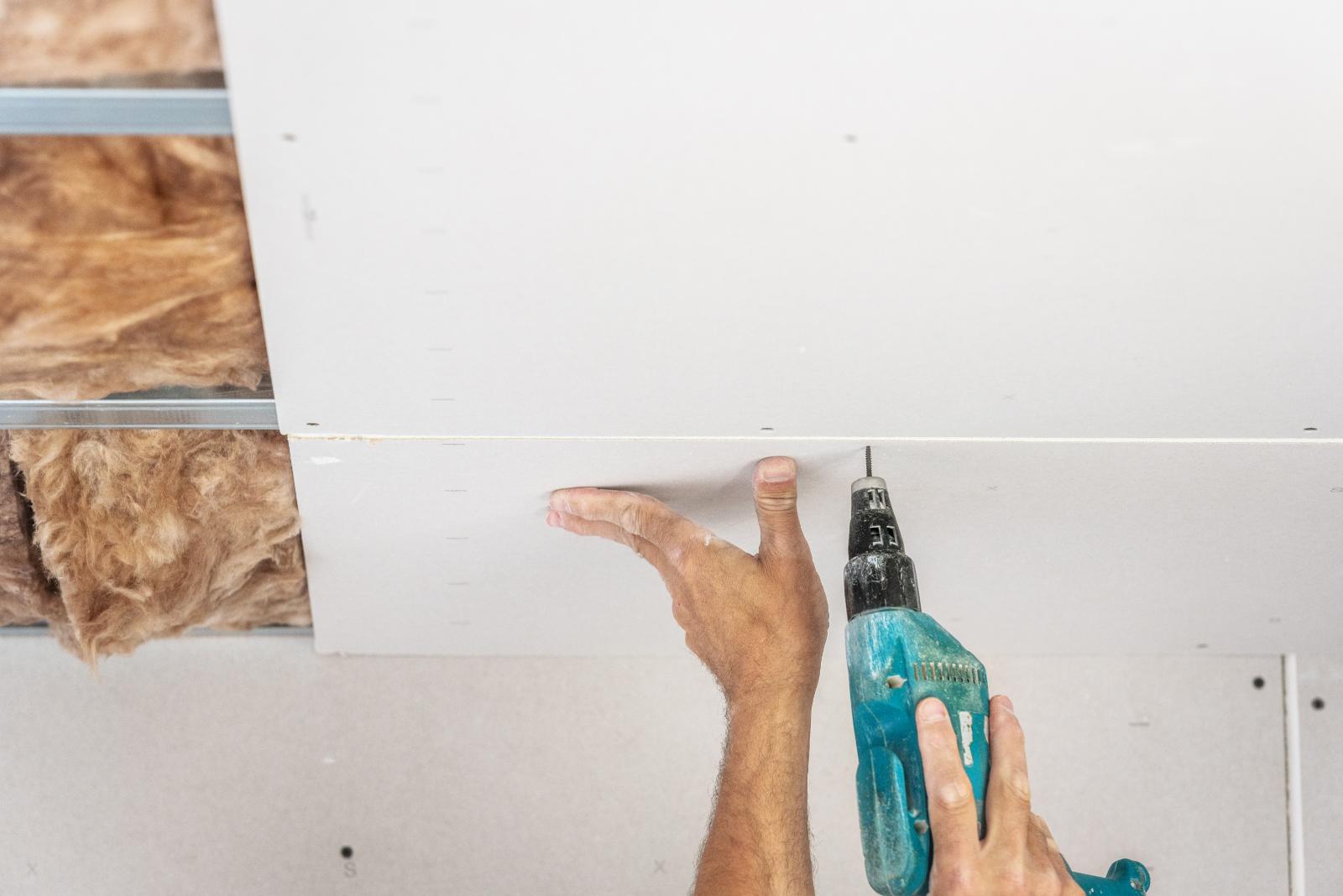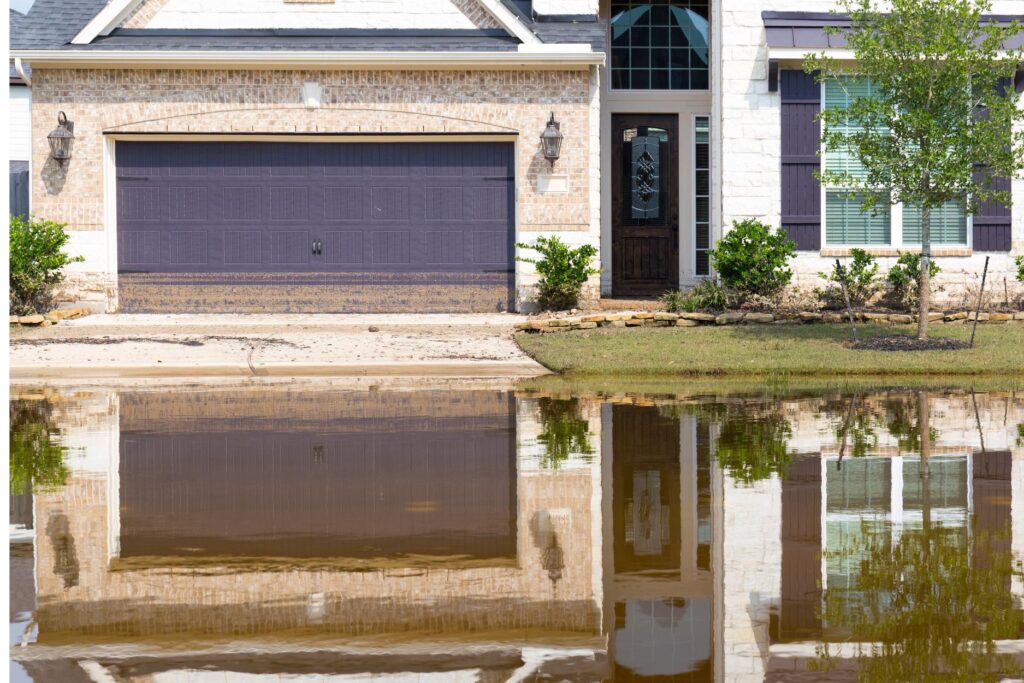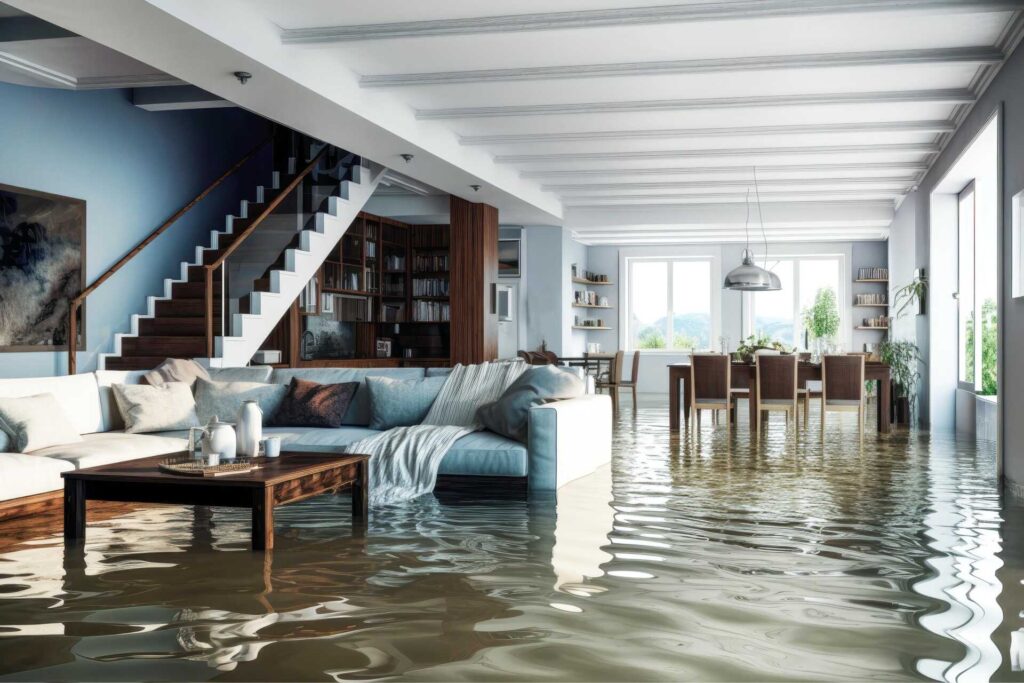Contents
Imagine transforming a rough, uneven drywall surface into a flawless masterpiece. With the ten best steps for drywall mudding, you can achieve a perfect finish that rivals professional craftsmanship. From preparing the surface to adding the final coat, each step plays a vital role in ensuring a smooth and polished result. Mastering these techniques will elevate your drywall mudding game to a whole new level, making every project a success.
Key Takeaways
- Mix mud to smooth consistency for application.
- Apply thin layers to avoid cracking.
- Feather edges for a seamless finish.
- Sand between coats for a smooth surface.
- Let each layer dry completely before the next step.
Preparing the Drywall Surface
Prior to starting the mudding process, make sure that the drywall surface is clean, smooth, and free of any debris or dust particles. Begin by inspecting the drywall for any imperfections or rough patches. Use a sanding block or sandpaper to smooth out any bumps or ridges. When sanding, remember to work in a circular motion to avoid creating uneven spots. For corners and edges, a sanding sponge can be useful to guarantee a consistent finish.
The equipment needed for this step includes a sanding block or sanding sponge, sandpaper with fine grit, a dust mask, and safety goggles to protect yourself from airborne particles. The sanding block provides stability and even pressure, resulting in a uniform surface. Opt for fine-grit sandpaper, around 120 to 150 grit, for a smoother finish without damaging the drywall.
A dust mask is essential to avoid inhaling dust particles, while safety goggles shield your eyes from debris.
Mixing the Joint Compound
When mixing the joint compound, keep in mind that consistency is key to achieving a smooth finish.
Make sure you use the proper water ratio as specified on the compound packaging to avoid a lumpy or runny mixture.
Thoroughly mix the joint compound until it reaches a uniform texture, free of any clumps or dry spots.
Consistency Is Key
Achieving the right consistency when mixing the joint compound is essential for successful drywall mudding. The consistency technique plays a vital role in achieving a smooth finish on your drywall. First, ensure you have the proper tools, such as a mixing paddle and a clean bucket. A clean workspace is equally important to maintain the integrity of the joint compound.
When mixing the joint compound, start by adding the dry mix to the bucket. Slowly pour in the water while continuously stirring to avoid clumps. The goal is to reach a creamy consistency similar to that of cake batter. Be mindful not to add too much water at once, as it can lead to a runny mixture that’s challenging to work with.
Consistency is key in ensuring the joint compound adheres well to the drywall surface and allows for easy application. By mastering the right consistency technique, you set yourself up for a successful drywall mudding process with a flawless finish.
Proper Water Ratio
To ensure the proper water ratio when mixing the joint compound for drywall mudding, gradually add water to the dry mix while stirring continuously until you achieve a creamy consistency similar to cake batter. The correct water ratio is crucial for achieving a smooth and workable consistency that will make the mudding process more efficient. Adding too much water can result in a runny mixture that’s challenging to work with, while too little water can make the joint compound stiff and difficult to spread evenly.
Once you have achieved the ideal consistency, apply the joint compound to the drywall seams and joints, ensuring a uniform layer for best results during the drying time. After the joint compound has dried completely, sand the surface to smooth out any imperfections before proceeding with the paint application. A well-sanded surface will enhance the paint’s adhesion and provide a flawless finish.
To complete the project, apply the finishing coat of paint for a professional and polished look.
Mix Thoroughly
Thoroughly mix the joint compound by combining the dry powder and water until a smooth and consistent texture is achieved. An important mixing technique is essential to ensure a uniform compound that spreads easily and adheres well to the drywall. Begin by pouring the required amount of dry joint compound powder into a clean mixing bucket. Gradually add water while stirring continuously. Use a mixing paddle attachment on a drill for efficient blending. Make sure to scrape the sides and bottom of the bucket to incorporate all the dry compounds.
Maintain your tools by cleaning them promptly after each use to prevent the compound from hardening on them. A clean workspace is also vital for a successful mudding process. Once the joint compound is thoroughly mixed, allow it to rest according to the manufacturer’s instructions before use. This resting period allows the compound to fully hydrate, ensuring top performance and minimizing drying time.
Applying the First Coat
Begin by loading your mud onto the drywall knife in a smooth and even layer. Hold the knife at a slight angle to the drywall, starting from the top and working your way down. Apply gentle pressure to make sure the mud adheres properly. When loading the knife, make sure not to overload it with too much mud, as this can lead to drips and uneven application.
As you apply the first coat, focus on achieving a consistent thickness across the drywall. Work methodically, covering the seams and joints evenly. Use long, smooth strokes to spread the mud, avoiding abrupt stops that can create bumps or ridges. Pay attention to any gaps or holes, filling them in with the mud as you go along.
For a professional finish, consider the sanding technique when applying the first coat. After the mud has dried completely, use fine-grit sandpaper to smooth out any imperfections. Sand lightly and evenly, being careful not to remove too much mud. This step is vital in preparing the surface for subsequent coats and ensuring a flawless final result.
Remember these application tips when working on your first coat to achieve a smooth and flawless finish on your drywall.
Taping the Joints
When taping the joints on drywall, make sure that the seams are properly reinforced for a strong and smooth finish. To begin, apply a thin layer of joint compound along the joint using a 6-inch drywall knife.
Next, embed the drywall tape into the compound by gently pressing it in with the knife. Confirm the tape is flat and wrinkle-free for a smooth finish.
After embedding the tape, apply another thin layer of joint compound over the tape using a wider knife, such as a 10-inch knife, to feather the edges. Feathering helps blend the joint compound smoothly with the surrounding wall, minimizing the appearance of the joint.
As you work on taping the joints, remember that the key to a professional-looking finish lies in keeping the layers thin and even. Avoid overloading the joints with compound as it can lead to uneven drying and cracking.
Once the joint compound is applied, allow it to dry completely before proceeding to the next step. Sand down any rough edges gently for a smooth surface.
Taping the joints is an important step in the drywall mudding process, ensuring that the seams are securely bonded and ready for additional layers to achieve a flawless finish.
Adding Additional Layers
To build up the strength and smoothness of your drywall mudding, apply a second layer of joint compound over the taped joints using a wider knife for feathering. When adding additional layers, it’s important to pay attention to layer thickness to prevent cracking and ensure a flawless finish. Aim for a layer thickness of about 1/8 to 3/16 inches for each coat to maintain structural integrity while allowing for proper drying.
Allow adequate drying time between each layer to avoid issues like cracks and bubbles. The drying time can vary depending on factors such as humidity levels and the type of joint compound used. Generally, joint compound takes about 24 hours to dry, but it’s advisable to follow the manufacturer’s recommendations for the specific product you’re using.
To ensure a professional outcome, inspect the first layer before applying the second. Look for any imperfections, such as visible tape or uneven surfaces, and address them before proceeding. Applying the second layer smoothly and evenly will help to cover any remaining imperfections and create a solid base for further finishing.
Sanding the Surface
Inspect the drywall mudding surface for any rough areas or imperfections before proceeding to sanding.
Proper technique is essential when it comes to sanding drywall mud to achieve a smooth finish. Start by using a sanding pole or sanding block with fine-grit sandpaper, typically in the range of 120 to 150 grit. This will help you effectively smooth out the surface without causing damage.
When sanding, use light to moderate pressure and move the sanding tool in a circular motion to avoid creating grooves or uneven spots. Work systematically across the entire mudded area, focusing on blending the edges where the mud meets the existing drywall.
Be sure to frequently check the smoothness of the surface with your hand to make sure you’re achieving the desired result.
As you sand, keep a vacuum cleaner or a dry cloth handy to remove dust and debris regularly. This won’t only help you see the progress you’re making but also prevent particles from settling back onto the surface.
Checking for Imperfections
Inspect the drywall surface meticulously for any imperfections such as bumps, ridges, or air bubbles.
Correct these flaws by carefully scraping away excess mud and feathering out the edges for a smooth finish.
Taking the time to address imperfections before painting will result in a polished final look.
Surface Inspection
Begin by carefully scanning the drywall surface for any imperfections or irregularities that may impact the mudding process. Proper surface preparation is crucial before mudding.
Make sure you have the necessary tools ready, such as a bright light source, a drywall knife, sandpaper, and a pencil for marking.
Common mistakes that can affect the mudding process include overlooking small dents or holes, neglecting to remove dust and debris, and not checking for protruding screws or nails.
Troubleshooting tips involve using a straight edge or level to detect uneven areas, running your hand lightly over the surface to feel for bumps, and inspecting the drywall from different angles to catch imperfections that may be missed at first glance.
Correcting Flaws
To ensure a smooth and flawless mudding process, closely examine the drywall surface for any imperfections that require correction. Imperfection correction is essential before proceeding with the final coat application.
Use a bright light source at a low angle to highlight any flaws like bumps, ridges, or indentations. Once identified, employ sanding techniques to rectify these imperfections. Begin using coarser grit sandpaper to level out larger bumps and ridges. Follow up with a finer grit sandpaper to smooth out the surface further. Be careful not to oversand, as it can damage the drywall.
After sanding, carefully wipe down the area with a damp cloth to remove any dust and debris. Once the corrections are made, you can proceed with applying the final coat, ensuring that the surface is now uniform and ready for finishing touches.
Taking the time to correct flaws will result in a professional-looking and polished drywall finish.
Priming the Mudded Area
Consider applying a high-quality primer to the mudded area to ensure a smooth and uniform surface before painting. The priming process is essential for several reasons. Firstly, a primer helps seal the drywall mud and prepares it for the paint application, ensuring better adhesion and durability of the final coat. Secondly, it helps in achieving a consistent appearance by providing a uniform surface that allows the paint to spread evenly.
When selecting a primer, opt for one specifically designed for drywall surfaces. These primers are formulated to fill in any imperfections, creating a more even base for painting. Additionally, choose a primer that matches the type of paint you plan to use to guarantee compatibility and excellent results.
After mudding, allow ample drying time before priming. This typically ranges from 24 to 48 hours, depending on the humidity levels in the room. Proper ventilation is essential during the drying process to expedite the evaporation of moisture and prevent the formation of mold or mildew. Open windows and use fans to facilitate air circulation.
Applying the Final Coat
For achieving a smooth and flawless finish on your drywall, the final coat must be applied with precision and attention to detail. Before applying the final coat, make sure the previous layers are completely dry. Start by inspecting the mudded area for any imperfections like bumps, ridges, or air bubbles. Correct these imperfections by carefully scraping away any excess mud with a putty knife.
Once the surface is smooth and free of imperfections, it’s time to sand the drywall. Use fine-grit sandpaper to gently sand the mudded area, focusing on creating a smooth connection between the joint compound and the drywall. Be cautious not to oversand, as this can damage the drywall and create uneven surfaces.
After sanding, inspect the area again to ensure it’s smooth to the touch and visually flawless. Apply the final coat of joint compound using a broad knife, feathering the edges to blend it with the surrounding area. Smooth out the coat with long, even strokes, taking care to maintain a consistent thickness across the surface.
Once the final coat is applied, allow it to dry completely before proceeding with any additional steps.
Before moving on to finishing touches, double-check the mudded area for any remaining imperfections and make any necessary corrections. This meticulous approach will result in a professional-looking finish on your drywall.
Finishing Touches and Cleanup
Before wrapping up your drywall mudding project, remember to thoroughly clean your tools to guarantee they remain in good condition for future use. Additionally, make sure to remove all dust and debris from the area to achieve a smooth and professional finish.
Taking the time for these finishing touches and cleanup steps will leave your project looking polished and well-executed.
Tool Clean-Up
Make sure all tools are thoroughly cleaned and dried before storing to maintain their quality and longevity. Proper tool maintenance and cleaning are essential after completing your drywall mudding project. Here are some tips for keeping your tools in top condition:
| Tool | Cleaning Method | Proper Storage |
|---|---|---|
| Taping Knife | Scrape off excess mud with a putty knife. Wash with warm, soapy water and dry thoroughly. | Store in a dry area to maintain their quality and longevity. Hang vertically or lay flat to maintain the blade’s straightness. |
| Mud Pan | Wipe clean with a damp cloth or rinse with water. Allow to air dry completely. | Store upside down to prevent dust buildup inside. Hang if possible to keep it away from other tools. |
| Sanding Block | Brush off excess dust and debris. Rinse with water and let it dry. | Keep in a cool, dry place to maintain their quality and longevity. Store in a toolbox or hang on a pegboard for easy access. |
Following these simple steps for cleaning and proper storage techniques will make sure that your drywall mudding tools remain in excellent condition for future projects.
Dust Removal
Ensure a thorough dust removal process is executed as part of the finishing touches and cleanup to achieve a smooth and polished final look for your drywall mudding project.
Dust control is vital at this stage to prevent particles from settling back onto your freshly mudded surface. Utilize a vacuum with a brush attachment to gently remove dust from the walls and ceilings. When vacuuming, make sure to use a technique that starts from the top and works its way down to capture all loose particles effectively.
Dealing with residue demands attention to detail. Wipe down surfaces with a damp cloth to pick up any remaining dust. Additionally, wearing a dust mask is highly recommended during this process to protect your respiratory system from inhaling fine particles.
Summary
Now that you’ve mastered the art of drywall mudding remember that practice makes perfect.
Like a skilled painter who carefully applies each brushstroke to create a masterpiece, take your time and pay attention to detail.
With patience and precision, you can achieve a flawless finish that will leave your walls looking professionally done.
Keep honing your skills, and soon you’ll be a drywall mudding expert.
Happy mudding!




